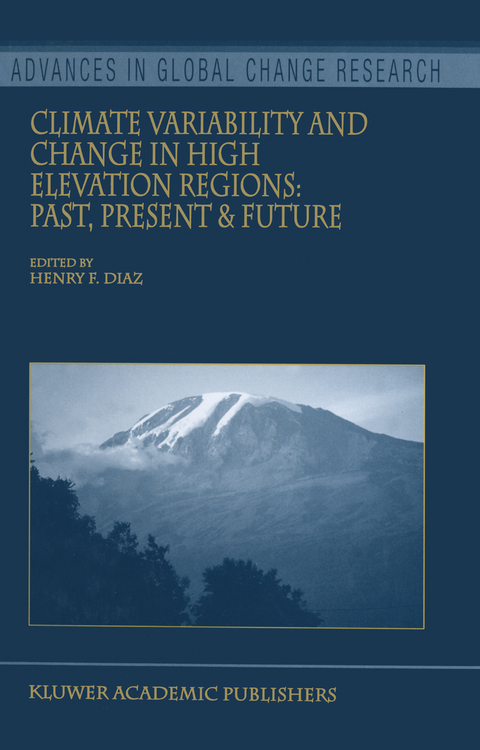
Climate Variability and Change in High Elevation Regions: Past, Present & Future
Springer-Verlag New York Inc.
978-1-4020-1386-7 (ISBN)
Climate Variability and Change in High Elevation Regions: Past, Present and Future.- Climatic Change in Mountain Regions: A Review of Possible Impacts.- Variability of Freezing Levels, Melting Season Indicators, and Snow Cover for Selected High-Elevation and Continental Regions in the Last 50 Years.- Comparison of Lower-Tropospheric Temperature Climatologies and Trends at Low and High Elevation Radiosonde Sites.- 20th Century Climate Change in the Tropical Andes: Observations and Model Results.- The Impact that Elevation has on the ENSO Signal in Precipitation Records from the Gulf of Alaska Region.- The Health of Glaciers: Recent Changes in Glacier Regime.- Tropical Glacier and Ice Core Evidence of Climate Change on Annual to Millennial Time Scales.- Glaciers and Climate in the Andes between the Equator and 30° S: What is Recorded under Extreme Environmental Conditions?.- Large-Scale Temperature Changes across the Southern Andes: 20th-Century Variations in the Context of the Past 400 Years.- Frequency-Dependent Climate Signal in Upper and Lower Forest Border Tree Rings in the Mountains of the Great Basin.- Upper Yellowstone River Flow and Teleconnections with Pacific Basin Climate Variability during the Past Three Centuries.- Taking the Pulse of Mountains: Ecosystem Responses to Climatic Variability.
| Erscheint lt. Verlag | 31.7.2003 |
|---|---|
| Reihe/Serie | Advances in Global Change Research ; 15 |
| Zusatzinfo | 10 Illustrations, color; 112 Illustrations, black and white; VI, 283 p. 122 illus., 10 illus. in color. |
| Verlagsort | New York, NY |
| Sprache | englisch |
| Maße | 155 x 235 mm |
| Themenwelt | Naturwissenschaften ► Biologie ► Ökologie / Naturschutz |
| Naturwissenschaften ► Geowissenschaften ► Geologie | |
| Naturwissenschaften ► Geowissenschaften ► Meteorologie / Klimatologie | |
| ISBN-10 | 1-4020-1386-8 / 1402013868 |
| ISBN-13 | 978-1-4020-1386-7 / 9781402013867 |
| Zustand | Neuware |
| Haben Sie eine Frage zum Produkt? |
aus dem Bereich


